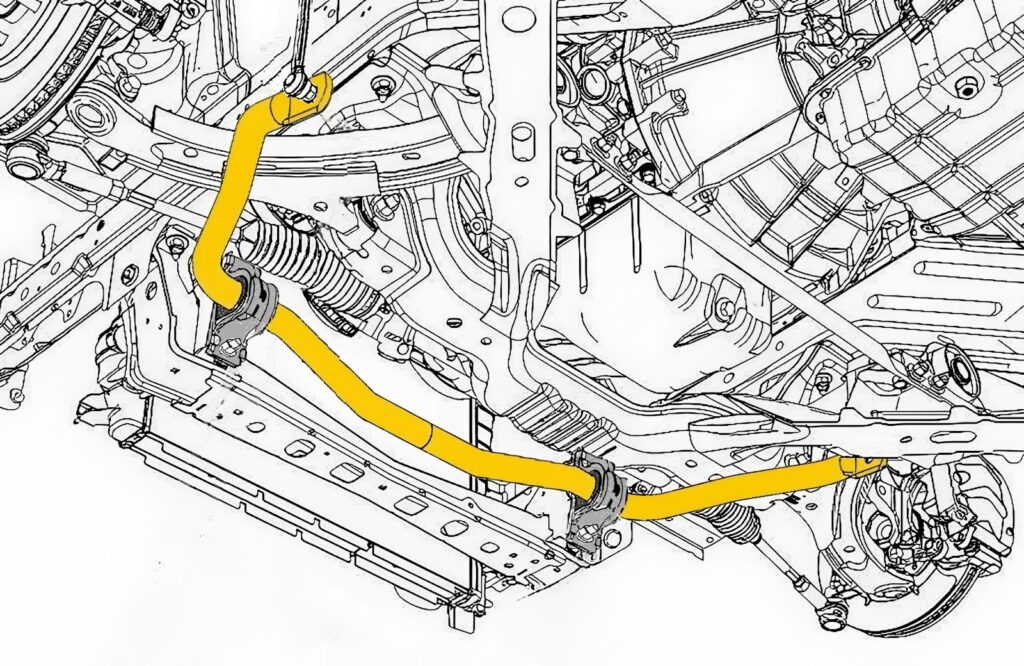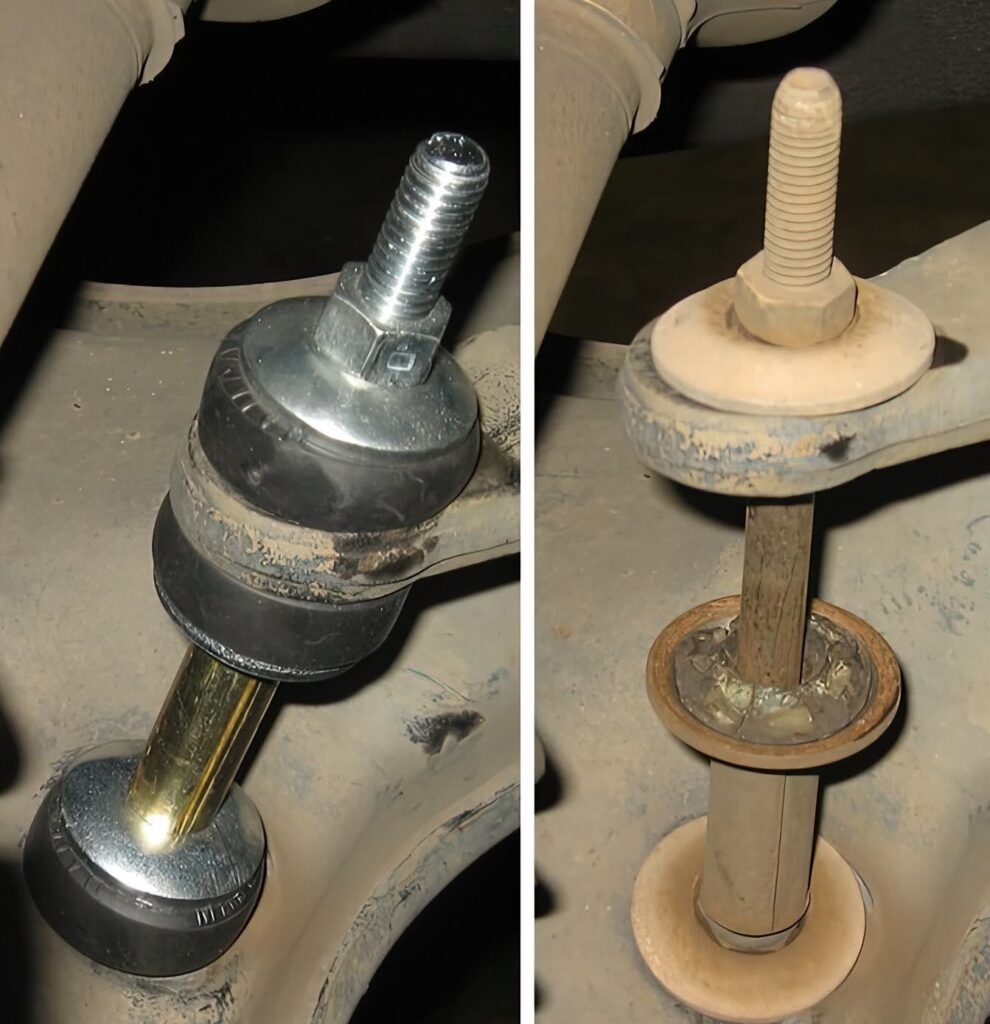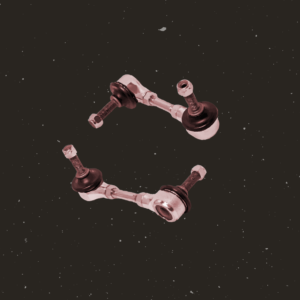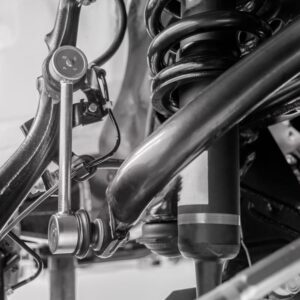The sway bar is bolted to the control arms via links and swivels in bushings bolted to the frame. You’ll find this metal rod on the front and/or at the back of the vehicle.

The sway bar ensures that the vehicle maintains its stability during swerving and turning maneuvers at speed. Sway bar links connect the sway bar to the control arm, steering knuckles, or struts.
The sway bar itself is a piece of spring steel and many vehicles have sway bars on the front and the rear for additional stability. Rear sway bars are fairly common on SUVs.
Tips On How to Access the Sway Bar

Accessing the sway bar involves lifting your vehicle using jack stands to get a good view of the underside.
To remove the sway bar, you’ll need to disconnect the sway bar links and then unbolt the bushing saddles from the frame.
Any information provided on this Website is for informational purposes only and is not intended to replace consultation with a professional mechanic. The accuracy and timeliness of the information may change from the time of publication.
































